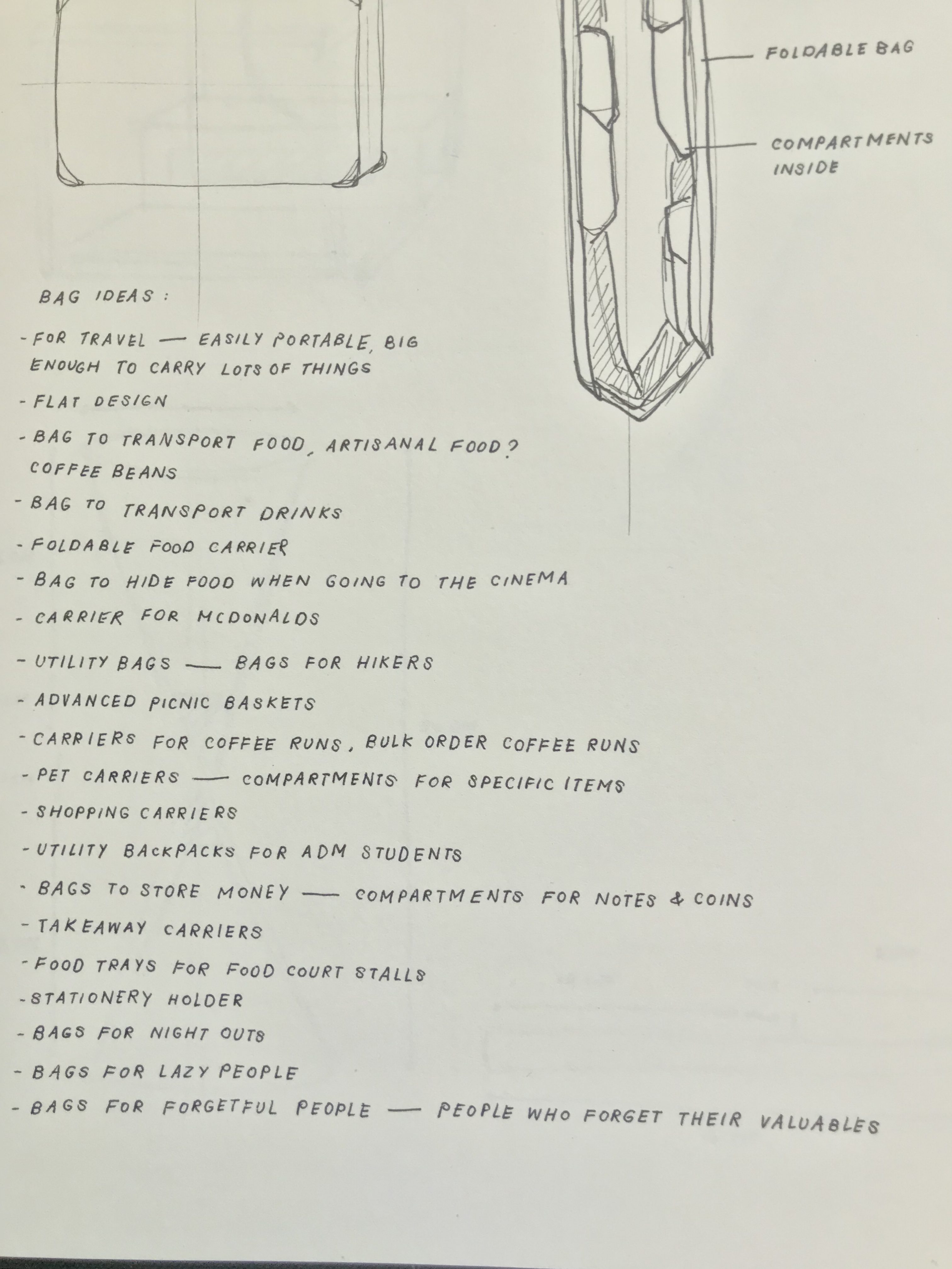Final Product
For our second project, we were tasked to create a paper-based mockup of a bag or portable carrier of our own creation.







concept
With regards to my final product, I was inspired to create a bag in response to an issue I’ve always had concerning one of my hobbies. One of my favourite activities to do with my friends and family involve going to the movies, and within that long span of 2-3 hours, we always end up getting quite peckish and thirsty. However, cinemas tend to overcharge for their snacks and drinks! Their selection is also usually quite limited. As a result, my friends or family members (my mum, mostly), and myself included, usually end up sneaking our own snacks and drinks into the movie theatre.
Therefore, to aid us in this first-world problem, I wanted to create a simple sling bag that is designed to hold a variety of snacks in a subtle and discrete manner.
Research & Process
Coming up with the final product involved conceptualising and ideation, experimenting and creating mockups, and eventually doing up the final model.
Conceptualising
The project first began with us learning and researching more about soft goods, or bags in particular. In addition to being exposed to how the functions of carriers evolved over time, and how designs can be catered to specific functions of bags, we also learned more about how to include different varieties of compartments and closure methods. My group and I presented on the closure methods and compartments of bags.
For a more detailed post on our findings on closure methods, please refer to: https://oss.adm.ntu.edu.sg/vwong005/bags-closure-methods/
During the ideation stage and inspired by expertly-designed bags I found on Pinterest and other websites, I tried to come up with variations on existing carriers or bags that are catered to some of my hobbies.


Following that, I looked to Pinterest and other websites again for inspiration and references on interesting designs and compartments I can include in the design of the bag. I was inspired by minimalist, vintage-looking sling bags, expandable bags that could cater to the carrier’s needs when more items needed to be added to it, and the idea of compartments fitted for specific functions (e.g. camera bags). Eventually, I thought it would be interesting to do a take on the ticket pocket and organisational bags, but for food.






Mockups
The first mockup involved experimenting with dimensions, determining if it could fulfil its intended function of carrying snacks, and seeing if the general design is visually-appealing.






Challenges
- Creating the hooks to hold the straps in place was quite challenging as I needed to create a hook out of sturdy material that was visually-appealing and able to hold the bag together
- The expandable pockets were difficult to curve, and ended up not being expandable because of the material used














